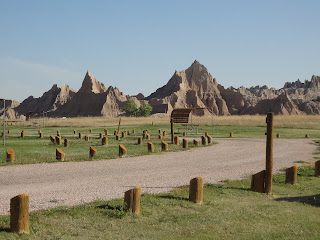My first
full “weekend” (Wednesday-Thursday) last week fell just before the Park opener,
so I went back down to Between the Lakes on the Madison River below Hebgen
Lake. The water clarity was much better than the previous week. Fishing nymphs
under an indicator, I had a fun couple of hours fishing the pocket water. This
nice rainbow trout followed a couple of dinks, and I missed one other solid
strike.
 |
| Rainbow Trout, Madison River Between the Lakes; red Serendipity |
After reading
the current speeds and water depths around boulders and in the seams for a
while, you start to see a pattern where the likely places are for fish to lie.
Then, it’s a matter of getting the cast-and-mend right for a proper drift. When
the puzzle pieces finally fit and that indicator is pulled under, it’s very
satisfying.
 |
| Where are the fish? Reading the Pocket Water |
This
stretch of the Madison is on National Forest land. Though it doesn’t have the
wilderness feel of the Park, it is still a beautiful place to be fishing. For
three hours that afternoon, I shared it with just one other angler.
Heidi was
arriving the next day down in Bozeman, about two hours away. US Highway 191
takes you down the Gallatin River valley. Once beyond the Park boundary, it’s
Montana fishing regs. The Gallatin (one of the three headwaters of the Missouri
River, named in1805 by the Lewis & Clark expedition after the then US Treasury
Secretary) is open for fishing year-round.
It’s a beautiful tumble-down
mountain stream down there, boulder-strewn and the current almost never
relaxes. It is not effortless fishing, but it is great fun searching the seams
and eddies for one of the river’s surprising big rainbows.
 |
| Late Season Snow on the Madison River at National Park Mountain |
The
weather system that hit the region last week was in full swing with gusty winds
and snow squalls. I felt a little foolish stopping to fish in those conditions;
no other anglers were around to lend an air of legitimacy. I only had an hour
or so to fish. It was all worth it, though, when I hooked a very nice fish in a
classic lie behind a midstream boulder. I must have spent at least half a dozen
casts to get the drift right before it hit. I saw its size when it rolled, and
then it was gone. Operator error or that small size 18 hook on the Serendipity,
it sure is challenging to get a good hook set in those conditions.
 |
| Going fishing in this weather? The Gallatin River at Taylor Fork |
Back in
the Park this week, I get in a couple of hours of fishing right after work.
Biscuit Basin on the Firehole is just ten minutes away. The river runs through
a wide meadow stretch for about two miles. It is lightly fished. The bison, elk
and a coyote like it there too, so you do need to look up from your fishing
every once in a while.
 |
| Firehole River Brown Trout on a Blue Wing Olive |
The river
is beautiful there. Undercut banks, deep runs, deceptively fast current speeds.
You don’t have to get in the water to fish, but you do need to keep your
silhouette low. The first afternoon, caddis were in the air and there were a
few rises. Couldn’t get much going, had the wrong leader on. The next
afternoon, mayflies were on the water and again a few rises. I air-released a
couple of dinks and then landed this nice brown trout.
 |
| Meadow fishing on the Firehole below Biscuit Basin |
I returned
last night, armed and ready for some good dry fly action. When no bugs or rises
appeared, I switched to a wooly bugger with a nymph dropper. Quickly caught a
couple small rainbow trout on a Prince Nymph. Just about quitting time, I
landed this dandy brown trout swinging the streamer through a deep run. Another
good-sized fish slashed at the streamer right on the surface at the end of a
cast.
 |
| Firehole River Brown Trout on a Wooly Bugger |
 |
| Early evening on the Firehole River |
It was a
beautiful calm evening as I walked for the car. Last weekend’s wintry weather
accentuated the tranquil scene. A dozen elk moved in behind me to graze in the
meadow as I departed.























